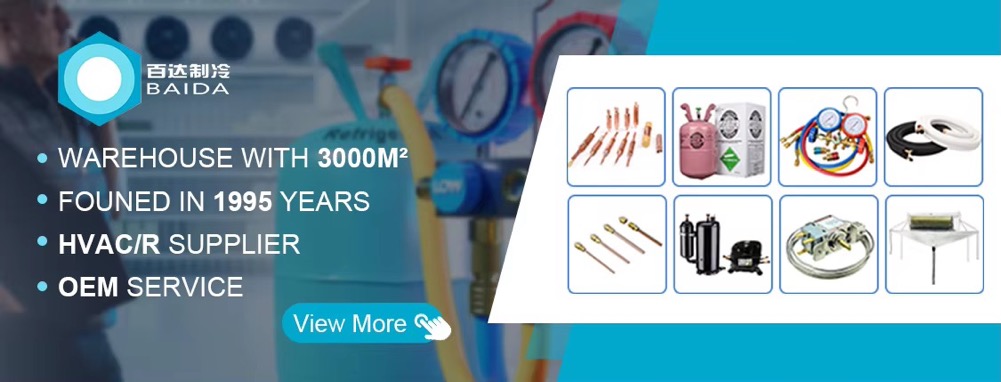1. Product Overview
REFRIGERATOR DIGITAL TEMPERATURE is a key component of the refrigerator refrigeration system. It is used to accurately monitor the temperature inside the refrigerator and convert the temperature signal into an electrical signal, which is transmitted to the refrigerator's control system to achieve precise temperature control and ensure the stability of the temperature inside the refrigerator.
2. Product Features
(1) High-precision measurement
Adopting advanced digital sensing technology, it can accurately sense the temperature changes in the refrigerator, with a measurement accuracy of up to ±0.5°C, ensuring the precise control of the refrigerator temperature and creating an ideal environment for food storage.
(2) Strong reliability
The sensor is made of durable materials and exquisite craftsmanship. It can work stably for a long time in complex environments such as low temperature and humidity inside the refrigerator. It is not prone to failure and has a long service life, reducing the frequency of replacement and maintenance.
(3) Quick response
It has a fast response to temperature changes, can sense the temperature fluctuations in the refrigerator in a short time, and transmit the signal to the control system in time, so that the refrigerator can respond quickly, adjust the working state of the refrigeration system, and maintain the stability of the temperature inside the box.
(4) Good compatibility
The design is universal and suitable for refrigerators of various brands and models. Whether it is a household refrigerator or a commercial refrigeration equipment, it can be easily adapted, providing a wide range of application options for different users.
(5) Convenient installation
The sensor is small in size, has a reasonable structural design, and the installation process is simple and convenient. Usually, you only need to install the sensor in the designated position inside the refrigerator, connect the power supply and signal lines, and the installation can be completed without complicated debugging and settings.
3. Product models and applications
(1) K50-P1110 / K50-H1106 / 077B7001
Applicable to some specific models of household refrigerators, it can provide accurate temperature monitoring and control for these refrigerators, ensure uniform temperature in the refrigerator, and provide reliable protection for food preservation.
(2) K50-P1125 / K50-H1107 / 077B7005
It has higher accuracy and faster response speed, and is suitable for refrigerator models with higher temperature control requirements, which can better meet users' needs for accurate temperature control of refrigerators.

(3)K60-L2024 / 077B7008
Designed for large commercial refrigerators, it can adapt to the temperature monitoring needs of large-capacity refrigerated spaces, ensure uniform distribution and stable control of temperature in commercial refrigerators, and improve food preservation and storage safety.
(4)K59-H1303 / 077B7004
Optimized for high-performance refrigerators, it has excellent temperature sensing performance, which can help refrigerators achieve more precise temperature regulation and improve the overall performance and user experience of refrigerators.
(5)K59-L1132 / 077B7007
Suitable for energy-saving refrigerators. Through precise temperature control, it optimizes the refrigerator's refrigeration cycle, reduces energy consumption, and achieves a perfect balance between energy saving and preservation.
4. Technical parameters
Measurement range: -40°C to 125°C, which can cover the temperature range of refrigerators in different working modes and meet various refrigeration needs.
Working power supply: usually DC 5V or AC 220V, adapting to different refrigerator electrical systems to ensure stable power supply.
Response time: less than 1 second, quickly capture temperature changes, so that the refrigerator can adjust the refrigeration state in time and maintain the stability of the temperature inside the box.
5. Installation Guide
Determine the installation location: Select a suitable installation location according to the internal structure of the refrigerator and the temperature monitoring requirements. It is generally installed in the cold air circulation area inside the refrigerator, such as near the evaporator or at the vent in the middle of the refrigerator to ensure that the sensor can accurately sense the actual temperature in the refrigerator.
Connect the line: According to the requirements of the product manual, correctly connect the power cord and signal line of the sensor to the control system of the refrigerator. Pay attention to ensure that the line connection is firm when connecting to avoid poor contact.
Fix the sensor: Use a suitable fixing device to install the sensor in the specified position inside the refrigerator, ensure that the sensor is firmly installed, and avoid vibration or movement during the use of the refrigerator.
Calibration and debugging: After the installation is completed, perform temperature calibration to ensure that the sensor readings are accurate. You can use a standard thermometer for comparative calibration, follow the refrigerator's user manual or the sensor's manual, and after completing the calibration, observe the temperature control effect of the refrigerator, and adjust it in time if there is any abnormality.










